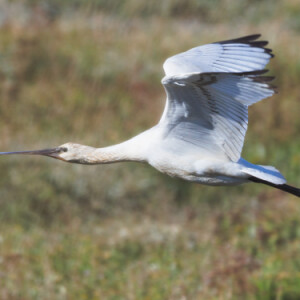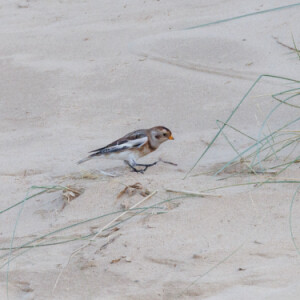Titchwell Marsh
Best. Birding. Day. Ever.
This was my first visit to Titchwell Marsh, but the seven hours I spent there were more than enough to have me falling in love with the place. Tonight I'm posting the first, second, and final birds from a day list (amazing by my rather poor birding standards) of 54 species, which included a couple of "lifers". I also recorded scores of Migrant Hawkers and Common Darters, a late and rather threadbare Wall (Lasiommata megera), a couple of Chinese Water Deer, and the rare Sea Aster Bee (Colletes halophilus).
Main image: a male Bearded Reedling (still commonly called a Bearded Tit - including, apparently, by every single birder in Norfolk apart from me). They're highly sought-after but often frustratingly elusive, but today, happily, small groups of these gorgeous birds showed up all over the reserve. "Looks like an irruption day," said someone, authoritatively.
Top tip: Bearded Reedlings don't like windy conditions, allegedly, so try looking for them when it's calm.
First extra: a Spoonbill in flight. I was photographing the Bearded Reedling in my main image when someone next to me said, "Is that a Curlew?" Luckily, when my head swivelled so did the camera, because ten shots later the Curlew Spoonbill was gone, and I didn't see another one all day.
Top tip: this isn't necessarily the best reserve for Spoonbills: according to this blog post from the RSPB they've successfully bred this year at RSPB Havergate Island in Suffolk, Fairburn Ings in Yorkshire, and Ouse Washes in Cambridgeshire, and there's also a successful colony at the privately owned Holkham Nature Reserve in Norfolk.
Second extra: one of three Snow Buntings that were noodling around the junction of the sea wall and the beach this evening. This pretty little bird - just a smidge bigger than a house sparrow - is probably a newly arrived winter migrant from Scandinavia. We host between ten and fifteen thousand Continental Snow Buntings over the winter, though I've been told that the five dozen or so pairs that breed in Scotland also move south in the colder months, so there's a tiny chance that the group are Scottish holidaymakers.
Top tip: Snow Buntings are legally protected Schedule 1 birds, so if you go looking for them keep your distance (as I did) and try not to disturb them. I heard about this trio first thing this morning, but by the time I got to the beach someone had stomped up close to them and put them to flight. "A photographer," said one of the assembled birders, in tones of deep contempt, eyeing my camera narrowly.
I do hate feeling that I have to apologise for other photographers, and I seemed to spend quite a bit of the day doing just that, so it was balm to my soul when someone told me, late this afternoon, that the Snow Buntings had reappeared on what appears to be their current favourite stretch of beach. Luckily, I just had time to go and see them before I needed to set off on the 150-mile drive home.
I'd be lying if I said that I hadn't spent any part of the next three and a half hours wondering about Norfolk house prices.
R: C5, D16.



Comments
Sign in or get an account to comment.


